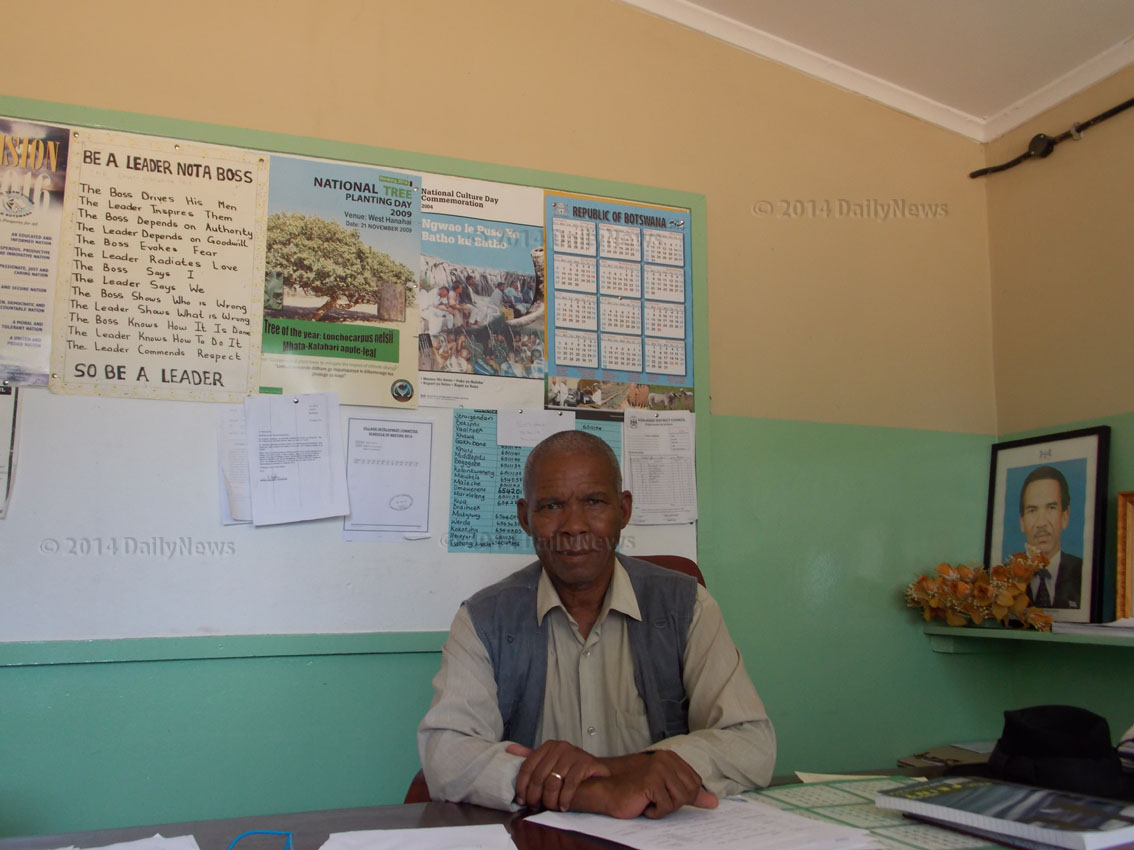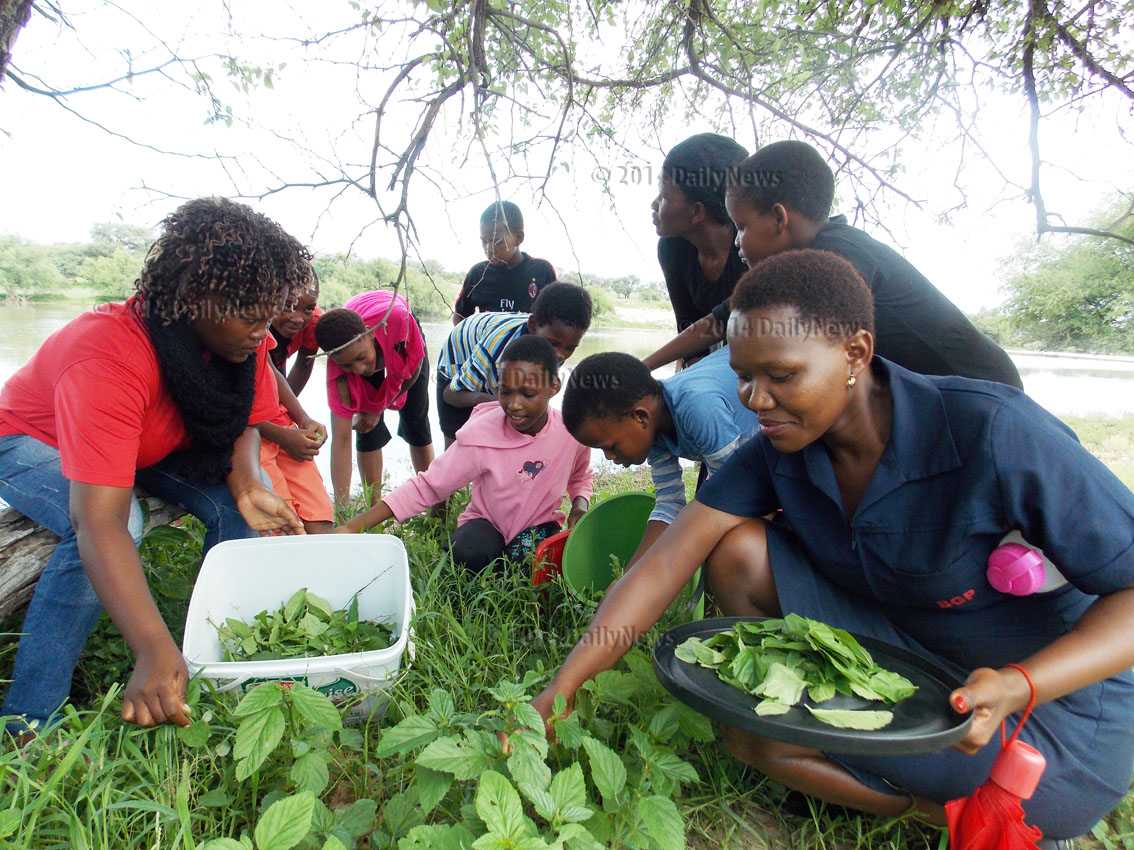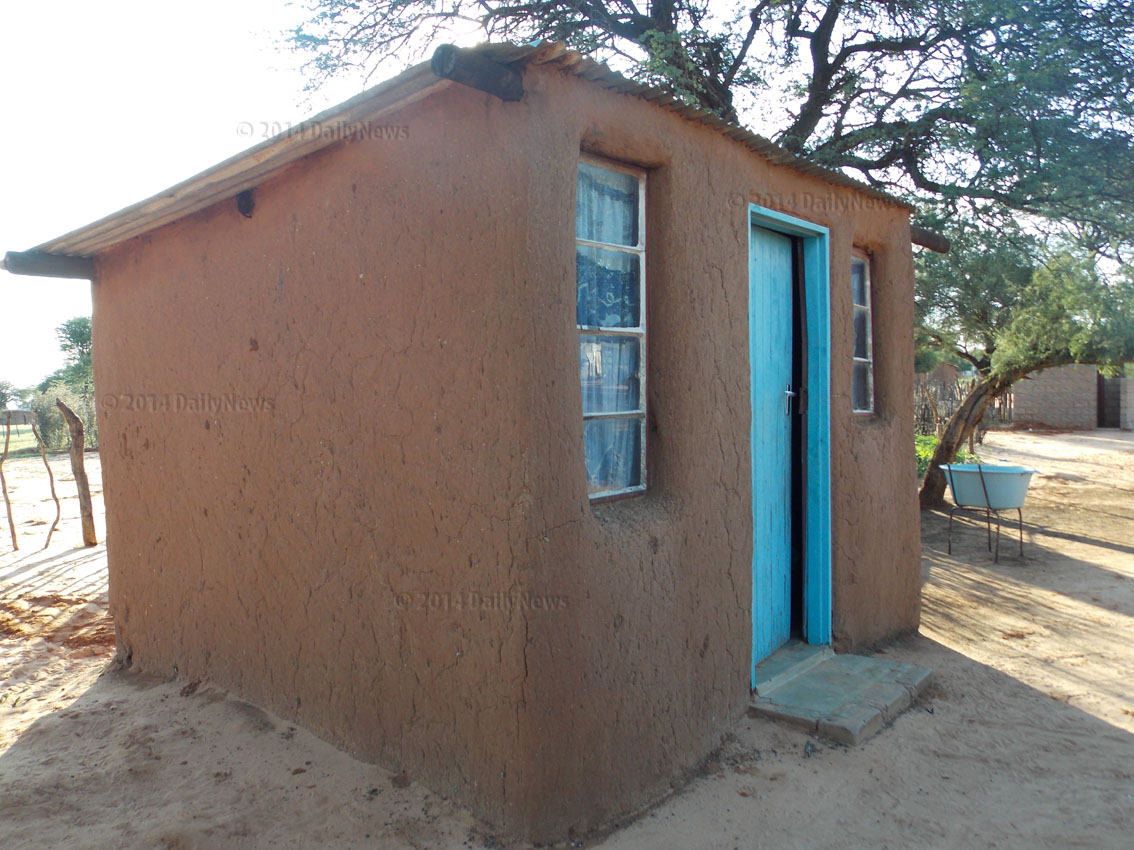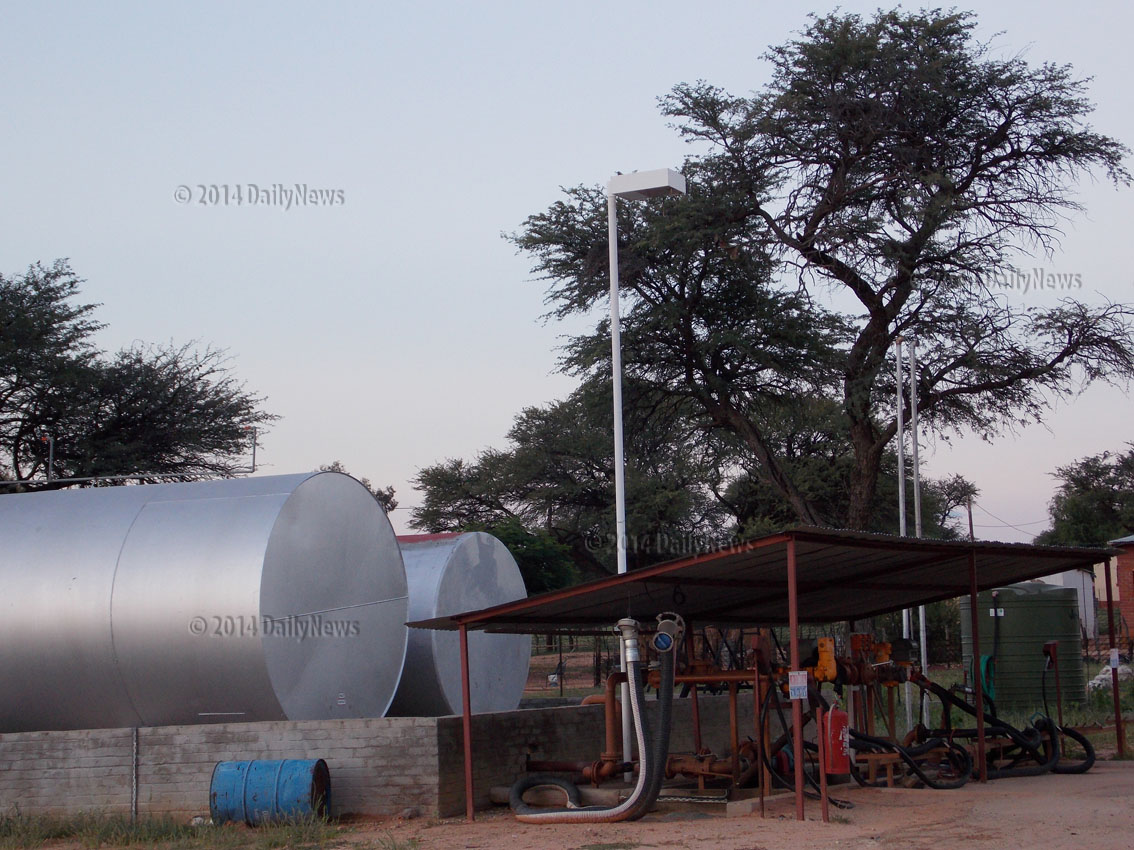Hereford yearns for development
23 Mar 2014
Immediately we reached Werda, we turned towards the east to join a gravel road. Not far ahead, a signpost with the inscription ‘Hereford 56’ stood majestically amid dry vegetation.
The vehicle glides along the gravel road, a thick cloud following behind, covering its tracks. This is the beginning of our long journey to Hereford. Very few people ever use the road we are travelling on.
After what might have been eternity on the grumpy road, we eventually reached our destination. Excited and curious children ran about the playground. They were our first contact with humanity in this desert settlement.
We managed to locate the Kgotla after asking for directions from a passerby. We could never complain about the warm welcome Hereford’s Kgosi Lenyeletse Kgannyeng gave us.
Hereford, otherwise popularly known to Kgalagadi inhabitants as Bray, is a typical rural settlement situated far from modernity, some 201 kilometres from Tsabong, the capital of Kgalagadi and 56 kilometres from Werda.
It is home to about 1 000 people, whose humbleness you can immediately make out. Most are Bangologa, with a few spatters of the Coloureds and Batlharo.
Kgosi Kgannyeng, who is a Motlharo, says his people came to live in Hereford in 1984 after government bought them a piece of land from Marne Wyk, an Afrikaner, who at the time had many Hereford inhabitants working in his ranch.
Government’s decision followed many requests going back to 1981 by the workers for the Kgalagadi District Council to buy them a plot.
Initially there were 700 inhabitants, 120 of whom were school going children. A few years after they had settled, government built them a clinic and a primary school, says Kgosi Kgannyeng.
It then built kgotla, immigration offices and a postal office. Before the government built them the school, learners were taught in a structure made of tree branches. Kgosi Kgannyeng was one of the teachers.
At that time all Hereford residents lived in traditional mud houses. In a desert place like Hereford it is not easy to get soil that compacts easily. The dwellers were fortunate to find usable soil in the nearby Molopo River.
To make it more compactible, they mixed the soil with donkey dung. The roof was made of tree branches and thatch.
Slowly development came to the settlement. In 1991 area councillor Nkwane built a modern house. That became inspiration for other people as few modern houses sprung up in the area.
However it will take some time before the whole village can have modern brick and mortar houses. Hereford is faced with many challenges, chief among them lack of land, says Kgosi Kgannyeng. The village is hemmed in, on three sides by ranches and on its southern side a boarder-post.
As a result farming, which has the potential to improve living standards, is almost impossible. “Farming, especially growing of crops is an uncommon practice in Hereford because we do not have enough land to carry it out.
We only grow a few crops in our gardens,” he said. Lack of land has also made it impossible for his people to rear cattle. They only keep a limited number of goats and donkeys, which do not need a lot of land for pastures.
Buying commodities in Hereford is a very expensive undertaking. “There are only two shops and a few tuckshops, as a result prices are usually very high”.
The high prices often drive residents to buy from far away places of Werda and Tsabong. There is no clothes store in this village and residents have to commute to Tsabong or even Jwaneng to buy clothes, which is costly. But the travel to those towns is itself a major challenge.
“Transport in this area is depressing; there is virtually no transport. Unless you have your own transport coming in and out of here daunting,” says Kgosi Kgannyeng. People who visit Werda hoping to come back the same day often end up spending three to four days away for lack of transport.
Kgosi Kgannyeng says lack of transport is largely due to the fact that public transport service providers will not operate on the uneven gravel road to the settlement. As the residents do not own any vehicles, the only ones that ever come to the settlement are government vans. When you are in Hereford, you need not be afraid you will be hit by a motor vehicle. Chances though are some stubborn donkey could pull a cart into a home in disregard to its owner’s instructions.
You are also likely to be trodden upon by donkeys if you decide to make a bed on one of the settlement’s dirt roads. Kgosi Kgannyeng is worried by the number of school children who bunk school to work in the ranches. Many of the children do so out of the desperation of their poor families, he says.
But thanks to the Department of Social Services and Community Development, many of the children eventually go back to school. Unemployment remains a major problem and has forced most active youth to vacate Hereford in search for greener pastures in towns and cities
There is very little criminal activity in Hereford. Although many people here are passionate consumers of alcohol, there are very few alcohol related problems , says Kgosi Kgannyeng . Once in a while there is a case of stock theft, he says.
Kgosi Kgannyeng is happy to lead the people of Hereford. These people, he says, are peaceful, respectful and cooperative. Call a kgotla meeting and they come en-masse. They will also be equally understanding during bereavements.
As the clock of development ticks, Kgosi Kgannyeng says his village will not be left behind. He looks forward to a day when developments would come to the village and bring jobs to his people. ENDS
Source : BOPA
Author : Malebogo Manene
Location : TSABONG
Event : Village profile
Date : 23 Mar 2014









